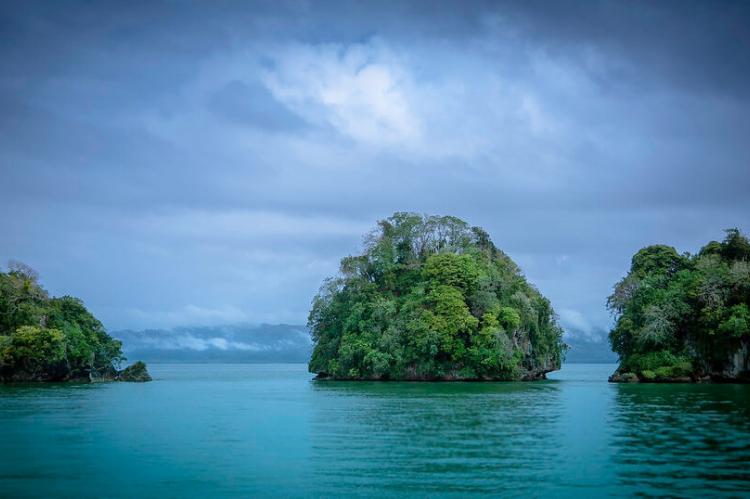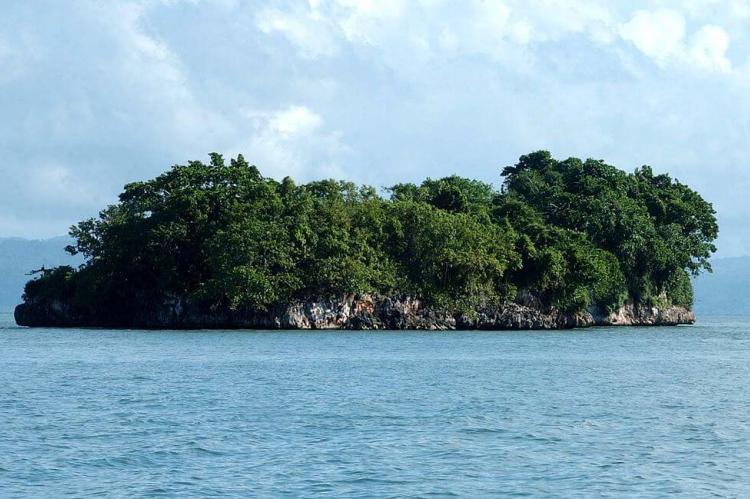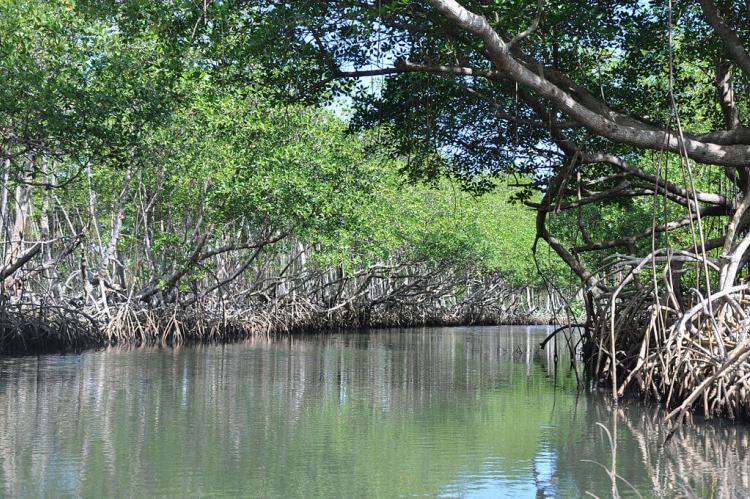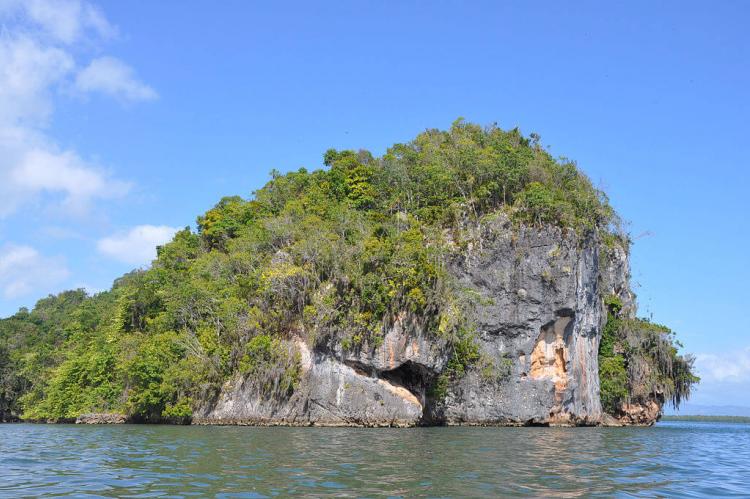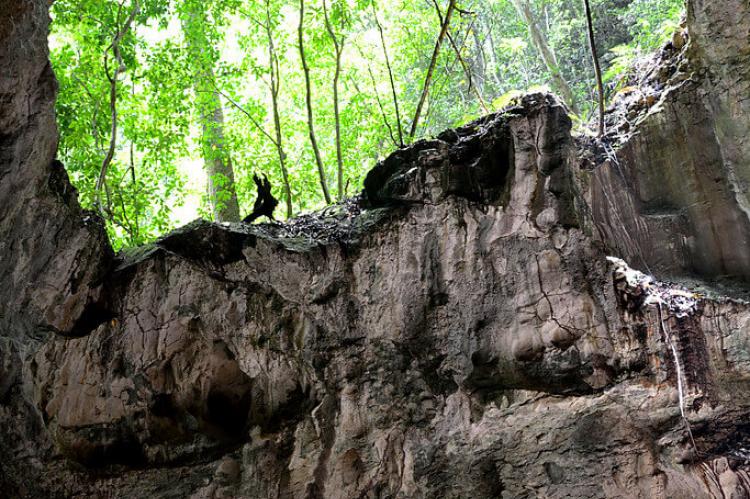Los Haitises: A Primeval Paradise in the Dominican Republic
Along the remote northeastern coast of the Dominican Republic, on the island of Hispaniola, Los Haitises National Park protects diverse habitats, including subtropical forests, coastal mangroves, and a landscape dotted with island outcroppings punctuating San Lorenzo Bay's serene waters.
A Tapestry of Biodiversity: Los Haitises National Park, Dominican Republic
Along the remote northeastern coast of the Dominican Republic, on the island of Hispaniola, lies a sanctuary of unparalleled natural beauty and cultural significance – Los Haitises National Park. This protected area, established in 1976, spans a vast 1,600 square kilometers (618 square miles), a pristine expanse of diverse habitats, including lush subtropical forests, intricate coastal mangroves, and a breathtaking landscape dotted with island outcroppings that punctuate the serene waters of San Lorenzo Bay.
A Karst Wonderland: Conical Hills and Subterranean Marvels
At the heart of Los Haitises National Park lies a geological marvel – a limestone karst plateau that has been sculpted by the forces of nature over millions of years. This unique terrain is characterized by a striking array of conical hills, sinkholes, and vast caverns, each a testament to the incredible power of erosion and the relentless passage of time.
The conical hills, which rise to 200 to 300 meters (660 to 980 feet), form dense clusters across the landscape, their uniform stature creating a mesmerizing vista that seems almost otherworldly. Between these towering formations, sinkholes and caverns reveal the subterranean wonders beneath the surface, their depths harboring geological treasures and a wealth of cultural heritage.
Within the caverns, the echoes of the past reverberate through the walls, adorned with intricate petroglyphs and pictographs attributed to the indigenous Taíno people who once called this island and much of the Greater Antilles home. These ancient artworks, etched into the very rock, are a powerful reminder of the deep connections between human cultures and the natural world that have endured for centuries.
A Coastal Paradise: Mangroves and Island Gems
Beyond the karst wonderland, Los Haitises National Park unveils another facet of its natural splendor. This coastal paradise combines lush mangrove forests with the shimmering waters of San Lorenzo Bay and its scattered island outcroppings, known locally as "keys."
The mangrove forests, which thrive along the park's coastal fringes, are a true testament to the resilience of life in this region. Species such as the red mangrove (Rhizophora mangle) and the white mangrove (Laguncularia racemosa) have adapted to the harsh conditions of their saline environment, their intricate root systems forming a complex ecosystem that supports a diverse array of marine and avian life.
Amidst the mangroves, the islets of San Lorenzo Bay beckon; their pristine shores and crystal-clear waters offer a glimpse into this region's untamed beauty. One of the most captivating of these keys is the Cayo de Los Pájaros ("Bird Key"), where the skies are nearly always filled with the graceful forms of frigatebirds and pelicans, their calls mingling with the gentle lapping of the waves.
A Biodiversity Hotspot: Endemic Treasures and Avian Wonders
Los Haitises National Park is not merely a feast for the eyes; it is a genuine biodiversity hotspot, a sanctuary for a rich array of plant and animal life that has found refuge within its protected boundaries. This park is a tapestry of ecological wonders, from the lush subtropical forests to the mangrove-lined coasts.
Among the park's most celebrated inhabitants are two endemic mammal species – the Hispaniolan hutia (Plagiodontia aedium) and the Hispaniolan solenodon (Solenodon paradoxus) – both of which face the threat of extinction. These unique creatures, found nowhere else on Earth, serve as poignant reminders of the importance of conservation efforts and the preservation of habitats like Los Haitises.
But perhaps the avian life truly steals the show in this national park. The skies above Los Haitises are a kaleidoscope of feathered wonders, from the majestic brown pelican (Pelecanus occidentalis) and the magnificent frigatebird (Fregata magnificens) to endemic species like the Hispaniolan amazon (Amazona ventralis), the barn owl (Tyto alba), and the stygian owl (Asio stygius).
Of particular note is the park's distinction as home to the largest population in the world of the endemic Ridgway's hawk (Buteo ridgwayi). This magnificent raptor soars above the conical hills and mangrove forests, a true symbol of the park's rich biodiversity.
A Tapestry of Flora: From Musk Wood to Orchid Splendor
Complementing the park's diverse fauna is a tapestry of flora encompassing everything from towering hardwood trees to delicate orchids that cling to the limestone outcroppings. Among the most iconic plant species found within Los Haitises are the "musk wood" (Guarea guidonia, locally known as cabirma santa), the fragrant cigar-box cedar (Cedrela odorata), the majestic ceiba (Ceiba pentandra), and the highly prized West Indian mahogany (Swietenia mahagoni, known as caoba in Spanish).
But it is not just the towering trees that captivate the senses; the park's flora also includes a wealth of smaller, yet no less spectacular, plant life. The vibrant cupey (Clusia rosea) and the grand leaf seagrape (Coccoloba pubescens) add color to the landscape. At the same time, countless species of orchids adorn the rocks and tree branches with their delicate blooms, creating a truly enchanting display of nature's artistry.
Conclusion
Los Haitises National Park is a true gem of the Dominican Republic, an ancient paradise where nature's grandeur and cultural heritage converge in a breathtaking tapestry of beauty and biodiversity. The otherworldly karst landscape, with its conical hills and subterranean caverns adorned with ancient petroglyphs, alongside the coastal mangrove forests and island outcroppings dotting San Lorenzo Bay, create a sanctuary for life in all its forms.
Exploring the winding trails and observing the endemic species that inhabit the park highlights the fragility of the planet's ecosystems and the urgent need to protect and preserve these natural treasures for future generations. Los Haitises stands as a beacon of hope, a testament to the resilience of life and the enduring beauty of the world, inviting all to tread lightly, appreciate its wonders, and safeguard its delicate balance for the future.
